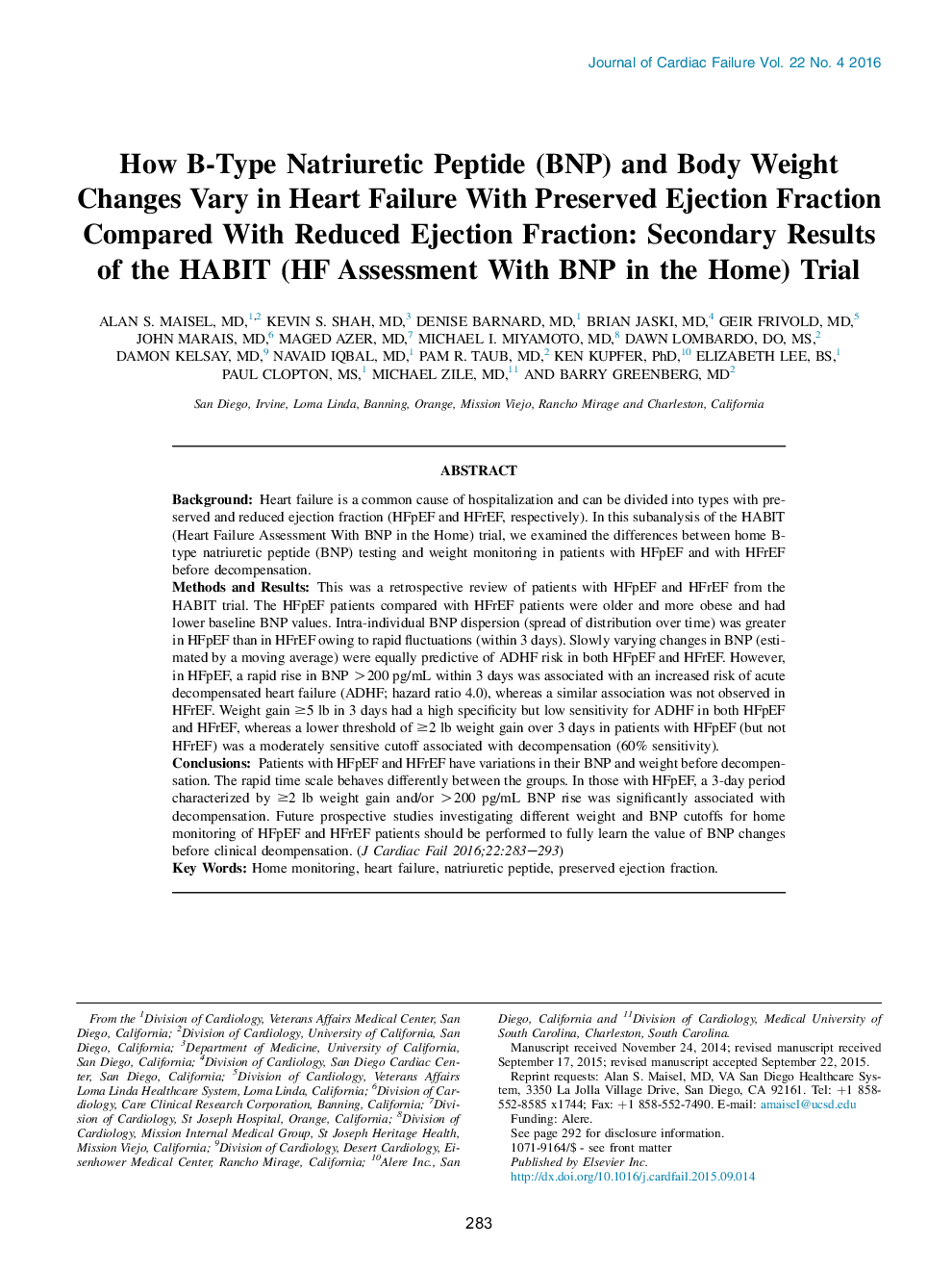| کد مقاله | کد نشریه | سال انتشار | مقاله انگلیسی | نسخه تمام متن |
|---|---|---|---|---|
| 2958579 | 1178292 | 2016 | 11 صفحه PDF | دانلود رایگان |

• HFpEF patients are more often female, older, more obese, and with lower BNP than patients with HFrEF.
• HFpEF patients have more frequent rises of BNP rises and less frequent incidences of weight gain.
• Patients with HFpEF demonstrates more day-to-day fluctuations in BNP than patients with HFrEF.
• Patients HFpEF and a rapid BNP rise >200 pg/mL in 3 days showed significant association with ADHF.
• Future studies investigating separate BNP and weight thresholds in outpatients with HFpEF and HFrEF should be investigated.
BackgroundHeart failure is a common cause of hospitalization and can be divided into types with preserved and reduced ejection fraction (HFpEF and HFrEF, respectively). In this subanalysis of the HABIT (Heart Failure Assessment With BNP in the Home) trial, we examined the differences between home B-type natriuretic peptide (BNP) testing and weight monitoring in patients with HFpEF and with HFrEF before decompensation.Methods and ResultsThis was a retrospective review of patients with HFpEF and HFrEF from the HABIT trial. The HFpEF patients compared with HFrEF patients were older and more obese and had lower baseline BNP values. Intra-individual BNP dispersion (spread of distribution over time) was greater in HFpEF than in HFrEF owing to rapid fluctuations (within 3 days). Slowly varying changes in BNP (estimated by a moving average) were equally predictive of ADHF risk in both HFpEF and HFrEF. However, in HFpEF, a rapid rise in BNP >200 pg/mL within 3 days was associated with an increased risk of acute decompensated heart failure (ADHF; hazard ratio 4.0), whereas a similar association was not observed in HFrEF. Weight gain ≥5 lb in 3 days had a high specificity but low sensitivity for ADHF in both HFpEF and HFrEF, whereas a lower threshold of ≥2 lb weight gain over 3 days in patients with HFpEF (but not HFrEF) was a moderately sensitive cutoff associated with decompensation (60% sensitivity).ConclusionsPatients with HFpEF and HFrEF have variations in their BNP and weight before decompensation. The rapid time scale behaves differently between the groups. In those with HFpEF, a 3-day period characterized by ≥2 lb weight gain and/or >200 pg/mL BNP rise was significantly associated with decompensation. Future prospective studies investigating different weight and BNP cutoffs for home monitoring of HFpEF and HFrEF patients should be performed to fully learn the value of BNP changes before clinical deompensation.
Journal: Journal of Cardiac Failure - Volume 22, Issue 4, April 2016, Pages 283–293